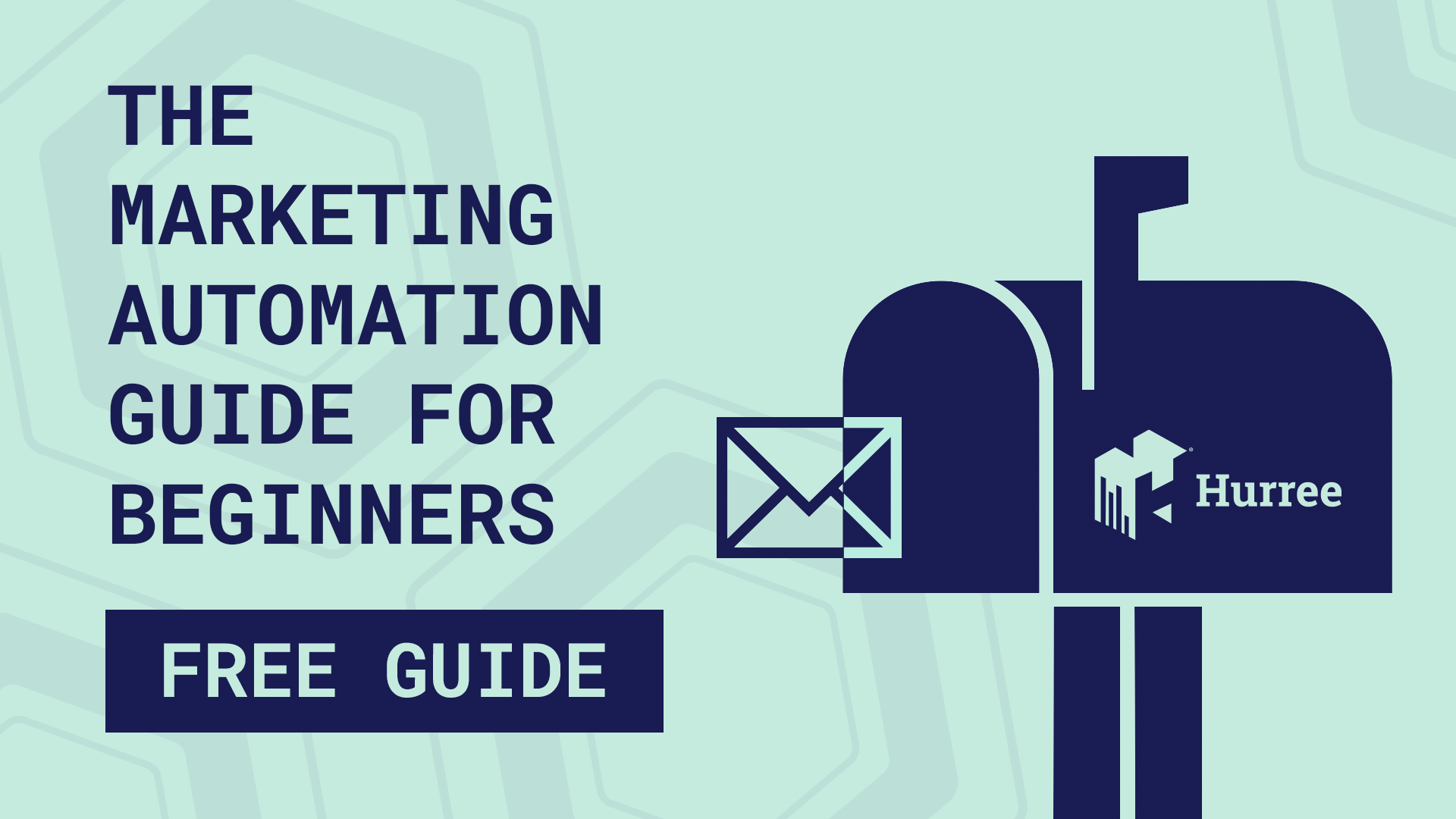How to Build the Perfect Customer Retention Campaign
As a marketer or business person, you will have heard this statement time and time again: it’s more cost-effective to retain current customers than it is to acquire new ones. In fact, according to research by Francis Buttle, it actually costs companies 16x more to nurture a new customer to the same level of revenue contribution as an existing, loyal customer.
But what does that mean for you? Should you go against all that you’ve learnt, that lead generation is key, that the aim of marketing is to draw in new prospects? That your weekly KPIs are meaningless?
Of course not. Lead generation is essential, and attracting new customers makes your business grow. The function of creating a customer retention campaign as part of your marketing strategy is to ensure that whilst you’re acquiring new leads, you’re not abandoning your current customers at the drop of a hat.
What is customer retention?
Customer retention refers to a company’s ability to hold onto existing customers. It means consistently engaging and re-engaging buyers, subscribers, or contacts that you currently have for the purpose of keeping them or ensuring that they don’t jump into the arms of a competitor.
Customer retention campaigns enable you to provide more value to your steady, existing customers whilst extracting value from them at the same time.
Source: Accenture
Your customer retention campaign is essentially the strategy used to maximise the profitability of each customer whilst ensuring that they don’t leave or ‘churn’.
Side note: Customer Churn
Customer churn rate is the rate at which customers stop doing business with an entity. Often presented as a percentage of customers or subscribers who don’t renew their subscriptions or make repeat purchases.
Having a high customer churn rate doesn’t negatively impact all brands but, for most, it’s a good sign that a business has some faults that customers can’t, or refuse to, tolerate.
Source: Bain & Company
There are a number of techniques and strategies that are preferred by different industries when it comes to customer retention. To keep things focused, we’re going to explore 7 key strategies with examples that relate to the financial services sector.
Side note: whilst we’re using the financial sector to exemplify these tactics, they are, in fact, applicable for most industries’ customer retention campaigns.
1. Start a customer loyalty programme
It’s not enough to just have a product or service. In today’s customer-centric landscape, financial services need to offer loyalty programmes within customer accounts. Loyalty programmes allow active customers to benefit from perks and rewards, which are typically issued on the basis of; the amount of time spent with the company, loans or mortgages activated, payments made, and so on.
Here are a couple of examples of successful loyalty programmes:
- Citibank ‘Points’: Citibank uses a points-based reward system. 1 point is earned with every $1 a customer spends. These points can be redeemed for things like travel opportunities, gift cards, mortgage loan payments, charity donations, student loan payments, and so on.
- Bank of America ‘Levels’: Bank of America has a tiered loyalty program that offers increased benefits the further ‘up’ the customer travels. The levels range from ‘Gold’ which offers things like a 5% interest rate booster, mortgage reduction, priority credit service, etc., to ‘Platinum’ which increases the values of all existing benefits (and more). It requires customers to have a balance of at least $50K. Then there’s a ‘Platinum Honours’ level which requires an account balance of at least 100K.
- Barclays ‘Blue Rewards’: Barclays rewards centre around cashback offers - such as 10% cashback to your ‘Rewards Wallet’ from over 150 retailers, cashback for loans, life insurance, debit payments, etc. The rewards don’t just appear when you open an account, however, they also require a subscription fee.
Because customers of financial services don’t purchase products in the sense of traditional commerce, loyalty schemes are put in place to incentivise spending as well as drive retention.
Source: Accenture
Most loyalty programs encourage account renewals or upgrades which prompt customers to remain with the brand in question and also promote exclusivity amongst active customers. This ‘exclusivity’ feel is often used to promote the well-known marketing tactic: ‘FOMO’ - the fear of missing out.
2. Highlight case studies
As the internet is globally accessible, people now have a digital voice and there are many platforms to speak from. So if you mistreat a customer, not only are you likely to hear about it but, chances are, you will lose current and future customers, too.
Case studies act as positive, extensive reviews that showcase why current customers should stay with you and why prospects should want to be with you. They establish proof that what you’re offering is valuable and of good quality.
You can include case studies in these areas:
- Your website: have a dedicated page on your site map or publish a case study as a testimonial article.
- Your social media profile: include a case study quote as your Facebook, Twitter or LinkedIn cover photo. Publish testimonial quotes on your Instagram story and save them as a highlight on your profile. Share a LinkedIn publication, etc.
- In emails: they can be quotes within the body of your email or offer them as content in the form of a downloadable PDF.
- In your newsletter: if you send out a weekly or monthly newsletter, include a case study within your news or recent content.
You can never underestimate the power of word of mouth marketing. If you have enough coverage around why your brand is good - and it’s backed up by real testimonials - prospects won’t hesitate to get on board with you.
3. Regularly communicate results and benefits
Customers will likely stay with you if the results your company yields are consistently positive. By this I mean if your perks, interest rates, customer service, and so on are better than your competitors. By regularly communicating good results and benefits, it will be much more difficult for customers to leave.
To be able to do this, you must have a good system for tracking and reporting the metrics that matter to your audience. You can communicate your results and benefits via monthly reports, updates on social media, in-app messages and customer testimonials.
4. Ask for feedback
Research shows that 70% of buying experiences are based on how the customer feels they’re being treated. You can only attain this practical information if you ask your customers directly. How can you know this if you don’t ask? Here’s why you need to ask for feedback and how you can go about doing so:
Why?
- Improves products and services
- Measures customer satisfaction
- Makes customers feel special and shows that you care
- Informs business decisions
- You can use feedback as testimonials that draw in new customers and inform other buyers
How?
- Offer support via multiple channels: live chat, email, telephone, in-app messaging
- Request feedback after an interaction
- Include customer feedback forms on web pages
- Use polls: in-app, on social media, on your website
- Email yes/no or open-ended surveys to your contacts
- Organise focus groups and conduct market research
Positive customer feedback helps you to stay on the right track and shows you what you’re doing well. Negative customer feedback can help you to identify weaknesses that inform your decision-making, direct your future actions and work to improve your brand, service, and communications.
5. Track and analyse churn metrics
You cannot operate in the dark. You need to be aware of what’s going on with your customers and prospects so that you don’t lose them or miss opportunities, especially those of high value. Having a high churn rate works against financial growth. Not only that, it can be difficult to predict, too. Unforeseen events like market fluctuations and the emergence of new competitors can induce churn.
Source: Small Business Trends
For those in the financial services, tracking and analysing churn metrics mostly means measuring account holder lifecycle and detecting users that are thinking of switching banks.
Assessing the present state of customers and their accounts works to prevent churn when financial, social or economic conditions change unpredictably.
6. Start a customer education programme
It's common for customers to become overwhelmed at times especially during, for example, the onboarding process, when changes are made to their accounts or when new product/brand features are introduced.
When customers have to adopt new solutions or adapt to changes that threaten their common routine, they can quickly abandon a platform, branch or app. A great way to retain customers who are likely to flee when changes are made or they’re faced with confusion is to create educational material. Educational material comes in many forms such as:
- A digital, guided walk-through of a banking app
- Downloadable ‘how-to’ guides
- In-depth academy content
- Online webinars
Whatever type of customer education you decide to offer, you need to make sure it’s informative, valuable, entertaining and/or relevant if you are to retain your customers.
96% said supporting learners online is a top priority, but only 36% said they have the capabilities to make this happen.
Source: UK's Chartered Institute of Personnel Development (CIPD) and Towards Maturity
7. Utilise the power of omnichannel
It's important that businesses provide customers with many avenues, channels and means to get in touch. But don’t spread yourselves too thin. Customers of banks are rapidly migrating towards digital channels and away from physical stores, but there will always be those who favour brick-and-mortar, particularly when it comes to financial services as people like to feel safe and more in control when it comes to their money.
Source: Francis Buttle
It’s all well and good having a well-functioning app but when you add finances into the mix, customers want certainty. They don’t want your app to crash when they’re in the middle of a transaction; they don’t want your emails to look totally different to what they see when they go on your website, and they don’t want the branding in your store to be different to what you have on your social media.
Banks and customers of banks that utilise omnichannel can enjoy benefits such as:
- Efficient resolution of issues: online interactions like live chat support can often resolve issues quicker than visiting a branch where you likely have to book an appointment or queue for an unknown amount of time.
- Fewer support costs: utilising online information such as FAQs, social media messaging, email or chatbots frees up the time of advisors who can then focus on more complex matters.
- Improved customer experience: creating seamless customer experiences between online and offline channels, as well as via multiple digital channels, shows that the brand is coherent, adaptable, and puts the customer at the forefront. By utilising the right omnichannel tools, you can create personalised experiences across different customer touchpoints which improves long-term relationships and helps to quell customer frustration.
Tools like Hurree can help you to achieve a seamless omnichannel experience; Hurree’s omnichannel marketing software puts marketers in control of their data by integrating the tools they know and love, i.e. social media platforms, CRM systems, email marketing software, payment tools, etc., allowing you to segment audiences and activate campaigns all from one place.
Working with Hurree, you will have the opportunity to:
- Eliminate data silos by connecting your existing marketing tools.
Benefits: gain full-picture campaign planning and execution for seamless customer experiences. - Create dynamic segments based on customer behaviour across multiple platforms.
Benefits: offer personalised marketing experiences that improve customer loyalty and retention which, in turn, leads to increased revenue. - Plan and activate automated omnichannel marketing campaigns using a single user interface.
Benefits: this saves you time, increases efficiency and provides customers with a consistent, seamless experience.
- Monitor audience segments and workflow performance with unified data visualisations.
Benefits: use enhanced business intelligence to identify campaign trends and optimise your marketing.
Conclusion
Customers today have specific requirements when it comes to allowing brands to retain their loyalty. And that’s because there are many companies out there that can offer what they need. If you are to flourish in this super-competitive landscape, you need to have a customer retention strategy that’s dependable. So, when you’re planning your next customer retention campaign, take a look at these 7 strategies and let us know how it goes!
Book a free demo today to see how Hurree can help you transform your company reporting and improve your sales & marketing output 💌 Don't hesitate to get in touch via contact@hurree.co if you have any inquiries - we’re happy to chat!
Share this
You May Also Like
These Related Stories

How to Increase Your Startup’s Customer Retention Rates

What is Omnichannel Marketing? (+ 7 Best Practices)
.png)


